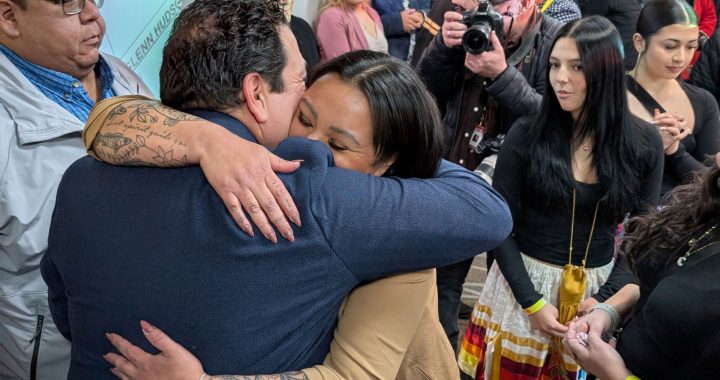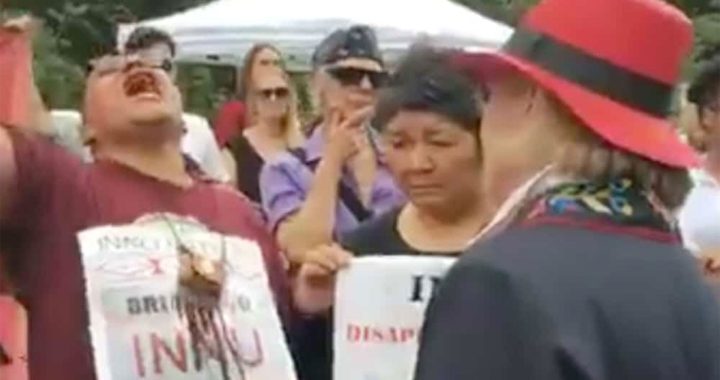Toronto’s Indigenous, Black and racialized citizens received an apology from the city’s interim police chief on Wednesday as the force released previously unseen race-based data showing disproportionate use of force on them.
“The results have confirmed what for many decades, racialized communities, particularly the Black and Indigenous communities have been telling us – that they are disproportionately over-policed,” said interim police chief James Ramer.
“This data demonstrates the unfortunate realities of those experiences. As an organization. We have not done enough to ensure that every person in our city receives fair. And unbiased policing. For this. As chief of police and on behalf of the service, I am sorry and I apologize unreservedly.”
The newly released statistics show that Black residents especially faced a disproportionate amount of police enforcement and use of force and were more likely to have an officer point a gun at them – whether perceived as armed or unarmed – than white people in the same situation.
Ramer acknowledged the data “will cause pain for many” and pledged to make improvements.
“We recognize that when a person has an encounter with the police, it can have a profound impact on their life, their mental health and their trust in policing,” he said. “It is for this reason that the Toronto police service must be a driving force and a leader in eliminating all forms of racial discrimination in policing and anywhere it is found.”
The statistics released Wednesday relate to incidents that took place in 2020.
Though they made up about 10 per cent of the city’s population that year, the figures show Black people faced 22.6 per cent of police enforcement action, which includes arrests, provincial offences tickets, cautions and diversions.
At the same time, 39.4 per cent of use of force incidents involved Black people, the data shows.
The statistics, which also include data on race and strip searches, are the first to be released under the Toronto Police Service’s race-based data policy. The policy was implemented in 2019 following several reports on race and policing as well as provincial legislation requiring several public sectors to collect such information.
There were 949 use of force incidents involving 1,224 people in 2020, according to the report. Researchers were able to link use-of-force reports – which include information on “perceived race” to police incident reports for 889 of them to get more detail.
In 371 incidents, a police firearm was pointed at someone, and in four, it was fired. Two incidents led to fatal injuries.
The data show differences in enforcement, use of force and strip searches across several racialized groups.
Indigenous people faced more enforcement, but proportionately slightly less use of force in those interactions, according to the data.
“Indigenous People were over-represented in enforcement action 1.5x their presence in Toronto but were under-represented in use of force incidents 0.9x (26 incidents) once they had an enforcement action. This data pattern may be characterized as high contact, low conflict,” according to the report.
Middle Eastern people were also overrepresented when it came to enforcement and use of force, while other groups _ such as Latino and East and Southeast Asian residents _ experienced less enforcement in comparison to their representation in the population but saw more use of force when they did interact with police.
White people, who represented roughly 46 per cent of Toronto’s population in 2020, faced proportionately less enforcement and less use of force.
East or Southeast Asian people were 1.6 times more likely than white people to have a gun pointed at them, and South Asian people were twice as likely.
Black people were 1.5 times more likely than white people to have a gun pointed at them when they were perceived to have a weapon and 2.3 times more likely when no weapon was perceived, the data show. In both those situations, white people were more likely than Black people to face lower levels of force.
The statistics also show that racial differences in use of force remained even after taking into account what police were initially called to investigate and what the main offence turned out to be.
For many racialized groups, the police divisions in which they experienced the highest rates of use of force were also the ones in which they made up a smaller proportion of the population, the findings show.
Indigenous, Black and white residents also were also strip-searched disproportionately compared with how many of them were arrested.
Arrests involving Black and white people were still more likely to result in strip searches in 2021 after new rules on such searches took effect, the data show.
However, the overall number of strip searches plummeted in October 2020 after Toronto police enacted the new rules. which require strip searches and frisking to be recorded on video and audio.
Before the changes, just over 27 per cent of arrests led to strip searches; afterward, just under five per cent did.
Toronto police have laid out 38 recommendations meant to address the findings, which they say are part of a broader effort to “reduce disparate outcomes.”
These include engaging with Black, Indigenous and racialized communities to understand the data and discuss a path forward; implementing a mandatory review of body-worn camera footage for all use-of-force incidents; and requiring officers on probation during their first year of service to debrief with supervisors after use of force incidents.
Police also say they will broaden their analysis in the next phase to include arrests, apprehensions and diversions.
The collection of that data began in January of last year.
The provincial government began collecting race-based data related to use of force from police services in 2020, three years after passing legislation that required several public sectors to collect data on race.
With files from the Canadian Press










